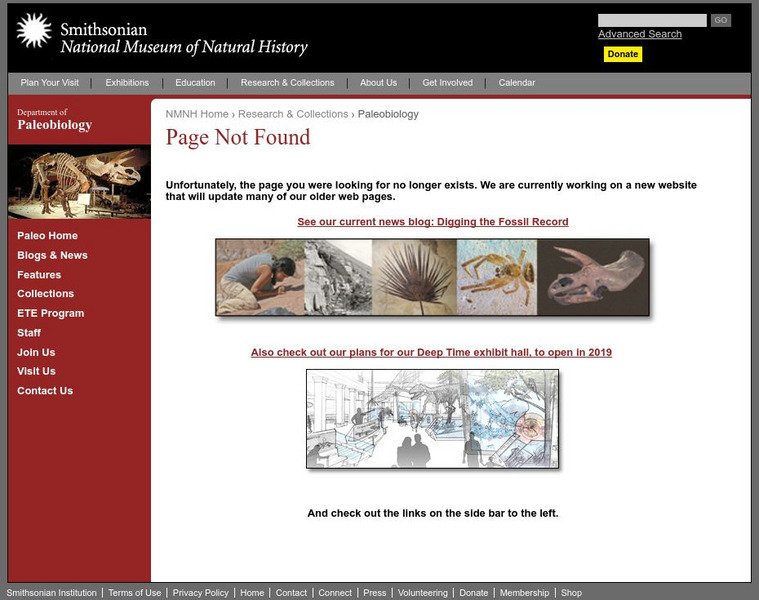Curated OER
What's in the Soil?
Second graders create stratified soil levels using pictures. In this earth science instructional activity, 2nd graders identify "artifacts" from 3 historic eras and divide them into 3 soil levels. Then they draw their own multi-level...
Curated OER
Photograph / Special Object Worksheet
In this fieldwork application worksheet, students utilize a photo or object that they brought to class to study. Then they follow the directions on the worksheet and interview a classmate, using the 13 questions, about his or her photo...
Curated OER
Minoan and Mycenaean Comparison and Contrast
In this ancient history worksheet, students compare and contrast the Minoan and Mycenaean cultures in the given chart. They identify their art, trade, building techniques, language, religion, and the area that they were each located.
Curated OER
Chronology: Visual Timeline
Students begin their timelines with the first narrative that they read and add to the timeline as they go. They create a list of history topics and themes that are important to the story. Students add these as sub-headings to the...
Curated OER
Introduction to Archaeology
Students view a PowerPoint presentation called, Archaeological Terms then discuss the job of an archaeologist and new vocabulary. They view the teacher made "artifact grid" and photograph the grid from different angles. They work in...
Curated OER
Archeology: Weapons of the Texanos
Students develop archaeological context skills through a simulation which places them in the year 2500. After listening to the teacher read, "Weapons of the Texanos," they record what they think the weapon is. Next, in groups, they...
Curated OER
Analyzing Artifacts Using Bloom's Taxonomy
Seventh graders apply Blooms Taxonomy to analyze a collection of artifacts. They define and discuss the nature of artifacts and work in groups to complete handouts. Students analyze an object (stone pipe) on a mystery artifact analysis...
Curated OER
Second Grade Time Capsules
Second graders leave clues from the past for students of the future by creating time capsules filled with artifacts from the year. These artifacts are buried along with others on school grounds somewhere. Students identify and analyze...
Curated OER
Introduction of Primary Sources
First graders create two personal artifacts to add to a primary source shoebox that represents information about themselves. The first draw a self-portrait then build an artifact from Play-Doh and pipe cleaners to represent something...
Curated OER
Name That Point!
Students compare projectile point attributes, identify and classify points, and match projectile points to a chronology.
Curated OER
"Dig It"
Twelfth graders explore Native American Mounds in Ohio to identify their purpose and methods of creation. A variety of learning stations are provided.
Curated OER
Putting It All Together: Creating an artifact
Eleventh graders analyze a variety of images and documents, then create artifacts to archive, such as a newspaper, an album, or scrapbook from their writings, drawings, and projects. They present learned information to their peers
Curated OER
The Vikings: Woodquay, Dublin
Students view the progamme that leads them through the process of researching an historical site. They are given the deifinition of an archaeologist. Students watch as two ten year olds are given the task of finding out as much as they...
Curated OER
The Iceman 2
Students identify and analyze the Iceman found in Europe with all of his organs preserved along with his personal artifacts. Students identify then about North Native Americans and write an essay defining their differences.
Curated OER
People of the Past
Students investigate the four groups of people that existed in the U.S. before the European settlers arrived. They predict how the people arrived in the U.S., then investigate their predictions to find out whether or not they are...
Curated OER
A Race Against Time
Students explore the act of preservation first in the process of preserving food and then in the preservation of historic sites, buildings, landmarks, and artifacts.
Curated OER
Four Ancient River Civilizations
Students explore how the environment shapes man, how man transformed his world, nd how art became part of the human process. The group is divided into clans and their migratory routes developed in the eight lessons of this unit.
Curated OER
Lesson 4: A Field Trip to the Maine State Museum
Students analyze the Maine State Museum's exhibit 12,000 Years in Maine. They create an artifact and write a description of that artifact that demonstrates their understanding of the way technology shapes culture.
Curated OER
LESSON PLANS (print version) pdf What is a Fossil?
Students can better explain how mould and cast fossils occur when they make their own cast fossils using plaster of Paris and objects such as shells, bone or even their own hand or footprint.
Curated OER
Underwater Excavation
Young scholars calculate artifact size and ship capacity based on the excavation of an ancient Roman shipwreck.
Smithsonian Institution
Smithsonian Education: Artifact & Analysis: Historical Interpretation
A companion to American history courses, Artifact & Analysis features historical artifacts and documents about consumerism and the nation expanding, teacher's guide, writing assignments, and essays.
Other
Object of History: Guide to Doing History With Objects
Explore the dimensions of America's rich history by taking a detailed look at objects from our past. Examine stories, important moments, and the evolution of the American people via primary documents, photos, and other artifacts.
Smithsonian Institution
National Museum of Natural History: Paleobiology: Paleo Art
Collection of art demonstrates a branch of scientific illustration that specializes in drawing fossils and other paleontological subject matter. Includes information on providing proper care for historical paleo art and offers methods of...























